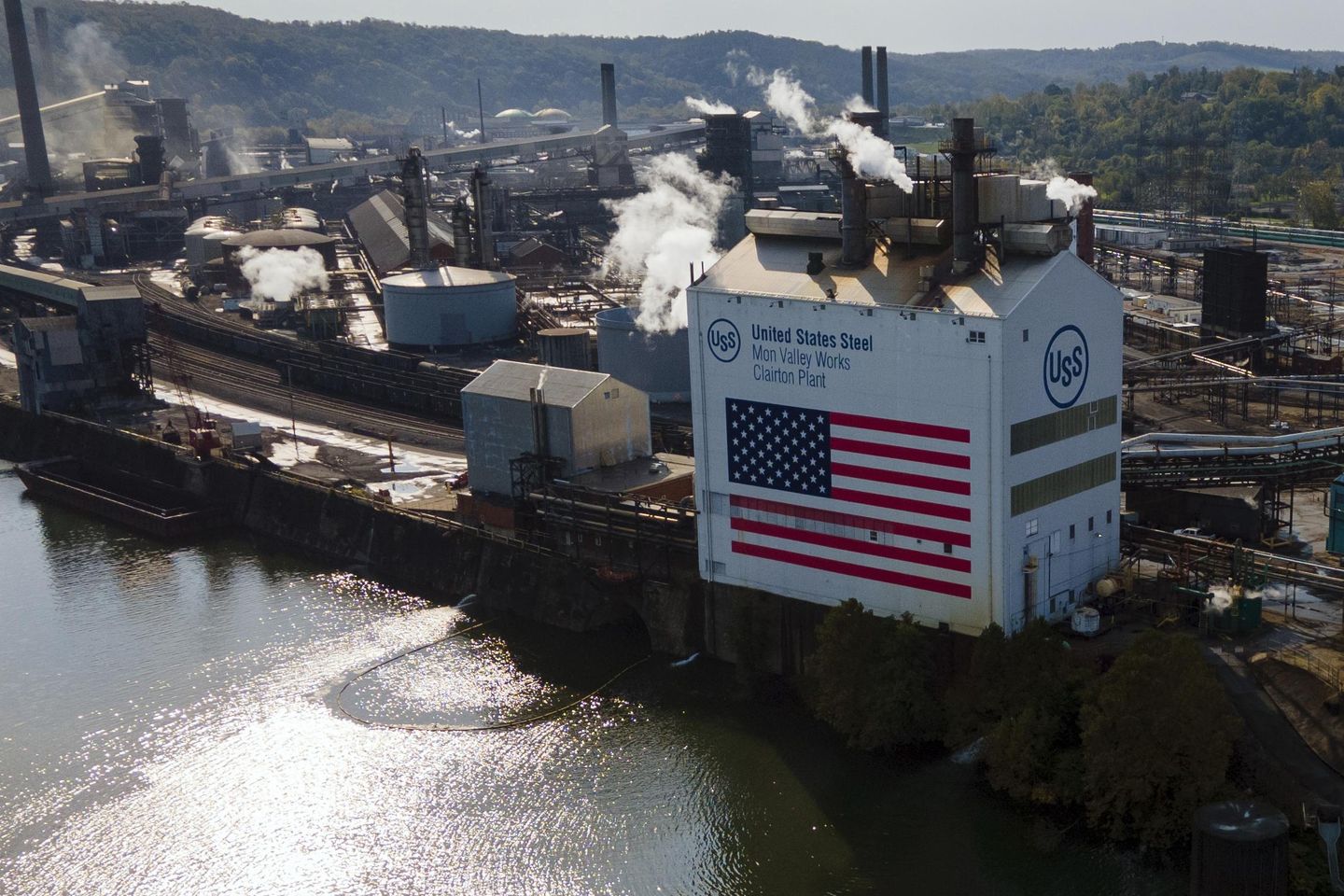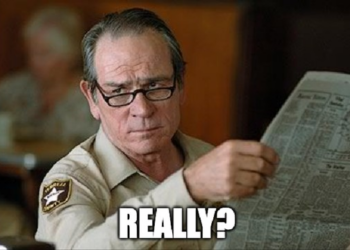
The United States relied on domestically produced steel for most of the 20th century. But for the last few decades, it has imported roughly 25% of the steel it uses, decimating an industry once synonymous with America.
What’s more, the imported steel comes from countries where producing it often costs more than in the U.S.
President Trump has vowed to save the industry and expand production. He’s already moved on two parts of that plan: steep tariffs on steel imports and increasing the U.S. energy supply to power steel mills across the country.
Steel companies welcomed the plans, but industry experts said it will take a complete overhaul of the industry to return the U.S. to its previous dominance.
“If U.S. Steel was a good investment, we would have people lined up to buy it,” said Raymond Monroe, executive vice president of the Steel Founders’ Society. “It costs too much to make steel in the United States, yet we are just as efficient as anywhere else in the world. It’s purely a public policy problem.”
The cost to manufacture steel in the U.S. is on par or even lower than many of the world’s top steel-producing nations. In 2021, it cost $707 per ton to make steel in the U.S., according to the most recent data from the Office of the U.S. Trade Representative. That’s the same price as China and below Japan ($855 per ton) and Germany ($905 per ton), two of the largest exporters to the U.S.
However, the governments of other countries subsidize steel production, reducing the cost. Those subsidies, when combined with other trade barriers, allow foreign countries to sell steel cheaper to American customers than U.S.-made steel.
In 2021, half of the world’s top steel companies were state-owned, empowering those companies to sell their steel at prices below the cost of production. American steel companies would likely go bankrupt if they set prices below the cost of production.
Canada is the largest importer of steel to the U.S., accounting for nearly 6 million tons of steel in 2024. It also offered subsidies to its steel industry in response to trade disputes, as well as supporting the industry’s transition to green energy.
When Mr. Trump imposed heavy tariffs on steel and aluminum during his first term, Canada responded by creating a fund to help cover project costs.
China is the world’s largest producer of steel, accounting for 53.9% of the world’s crude steel in 2023, according to data from the World Steel Association. Beijing’s steel subsidies are more than ten times higher than other economically developed countries.
Among the top ten largest steel companies in the world, six are located in China, and five of those companies are state-owned.
These subsidies allow these companies, many of which would collapse without government support, to operate at a loss. It also allows China and other nations to flood the global market with cheap, heavily subsidized exports, undercutting U.S. producers. Despite the heavy government intervention, Chinese steel accounts for less than 2% of U.S. imports.
Countries across the globe followed China’s footsteps and rapidly expanded production with their government funding entirely or most of the ramp-up. Those countries include India, Turkey, Iran, South Korea, Vietnam, Russia, Brazil and Mexico.
Brazil, Mexico, South Korea, and Vietnam follow Canada as the largest steel importers to the U.S., according to the International Trade Administration. Some of those countries are importing raw materials from China and then processing them and shipping the steel to the U.S. as their own export, thereby avoiding tariffs on China.
The government-funded steel expansion flooded the world market with steel, reducing demand for the same period. In 2000, the U.S. had 10% of the world steel market, but that shrank to less than 5% in 2019, according to data from the Economic Policy Institute.
The flood of cheaper steel decreased the demand for U.S. steel, even within America’s borders. As a result, American steel companies did not invest as heavily in equipment to produce steel as they did in decades past. Starting in 2004, the U.S. went from investing over 2% of its gross domestic product in industrial equipment to less than 1%, according to a study from the Federal Reserve Bank of St. Louis.
“The competitiveness is not based on the cost of manufacturing steel, but the cost of manufacturing steel in the U.S. compared to doing it in China and Europe,” Mr. Monroe said. “Our price is too high compared to the rest of the world because our public policy burdens capital-intensive industries with costs.”
Mr. Monroe suggested that transforming the steel industry into a public utility like gas or water would help it be more competitive.
Mr. Trump launched a two-pronged approach to reviving the U.S. steel industry.
“Steel is the backbone of our nation’s infrastructure and critical military hardware. President Trump’s America First agenda of tariffs, deregulation and unleashing American energy isn’t just reviving our steel industry and saving steel jobs – it’s safeguarding America’s national and economic security,” said White House spokesman Kush Desai.
The president sought to combat the flood of cheap overseas products by imposing a 25% tariff on steel and aluminum, as well as much higher tariffs on all imports from China. He also paused an additional tariff hike on global trading partners, leaving in place an additional baseline 10% tariff on top of the steel and aluminum tariffs.
By raising costs on imports, the thinking is that U.S. steel will be more competitive in the global landscape. It appears to have had some effect. Since Mr. Trump announced the tariffs, Hyundai Steel, a Japanese company, announced it will spend $5.8 million to build a steel mill in Louisiana.
“President Trump is a champion of the domestic steel industry and his American First Trade Policy is designed to fight the unfair trade that has harmed American workers and weakened manufacturing in the United States,” said Steel Manufacturers Association President Phillip K. Bell, adding that the steel tariffs will “turn America into a manufacturing powerhouse.”
The National Foreign Trade Council, an industry group for large-use companies, said the tariffs would increase costs paid by American manufacturers.
“The president’s tariffs will also tack on added costs to American manufacturing, assembly and farming,” NFTC President Jake Colvin said. “There is simply no way to mitigate all of the added costs of inputs to finished goods from the Administration’s complex and growing web of tariffs.”
Mr. Trump is also betting his energy policies can help return steel manufacturing to its previous glory days.
He signed an executive order this month to increase coal production by invoking a 1950s-era law that allows the federal government to take actions to boost sectors deemed critical to national security.
Coal is an essential ingredient in the production of steel. It takes around 770 kilograms of coal to make one ton of steel. The steel industry accounts for roughly 14% of the global coal consumption, according to data from Global Efficiency Intelligence. Reducing the cost of coal will make steel production less expensive.


![NYC Tourist Helicopter Falls into Hudson River, Siemens Executive and Family Among Those Killed [WATCH]](https://www.right2024.com/wp-content/uploads/2025/04/NYC-Tourist-Helicopter-Falls-into-Hudson-River-Siemens-Executive-and-350x250.jpg)





![Red Sox Fan Makes the ‘Catch of the Day’ with Unconventional ‘Glove’ [WATCH]](https://www.right2024.com/wp-content/uploads/2025/04/Red-Sox-Fan-Makes-the-‘Catch-of-the-Day-with-350x250.jpg)
![Green Day’s Cringe Trump Diss Ends in Fire and Evacuation [WATCH]](https://www.right2024.com/wp-content/uploads/2025/04/Green-Days-Cringe-Trump-Diss-Ends-in-Fire-and-Evacuation-350x250.jpg)

![Bikini Clad Spring Breakers Prove Our Education System is Failing Students [WATCH]](https://www.right2024.com/wp-content/uploads/2025/03/Bikini-Clad-Spring-Breakers-Prove-Our-Education-System-is-Failing-350x250.jpg)





